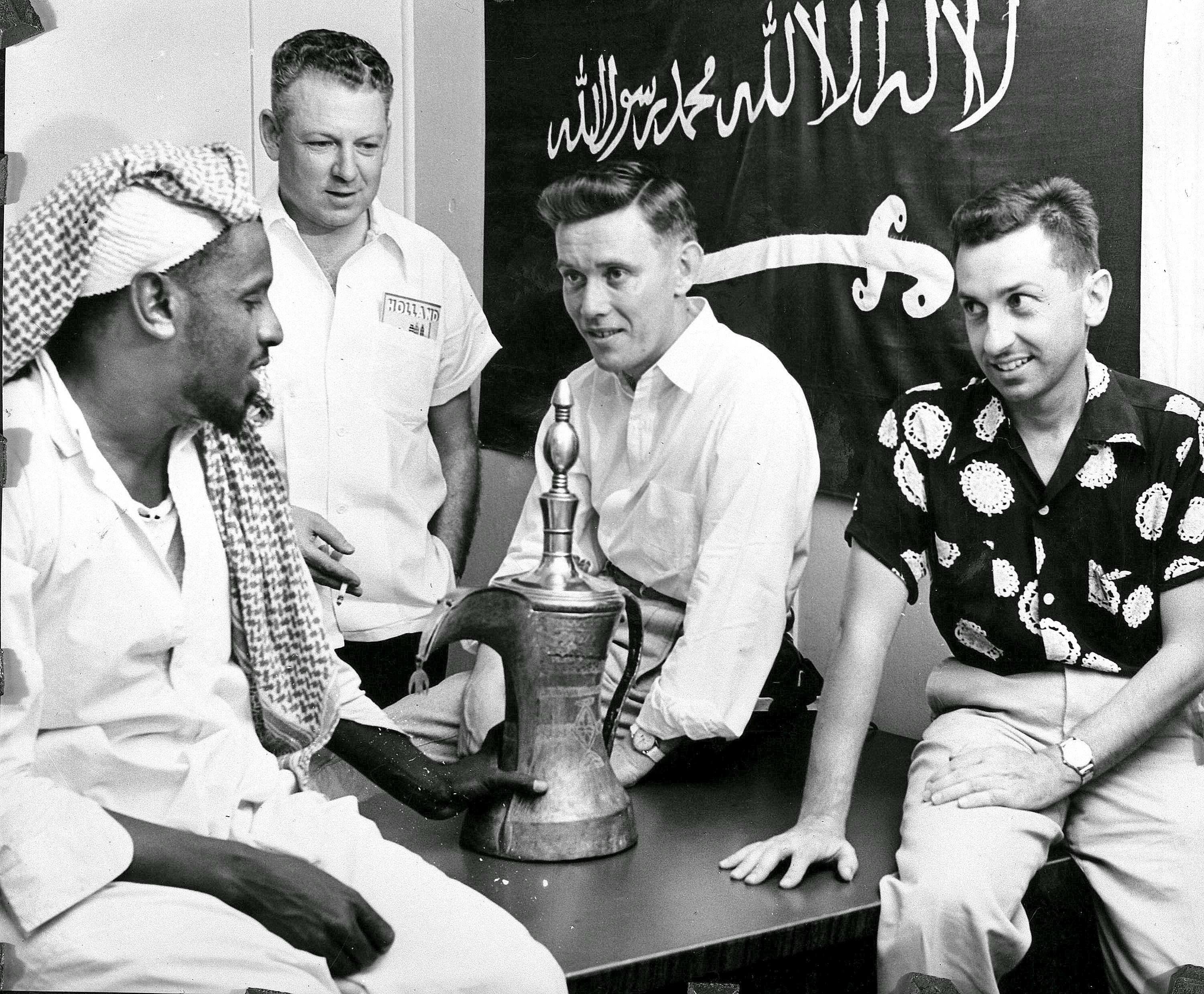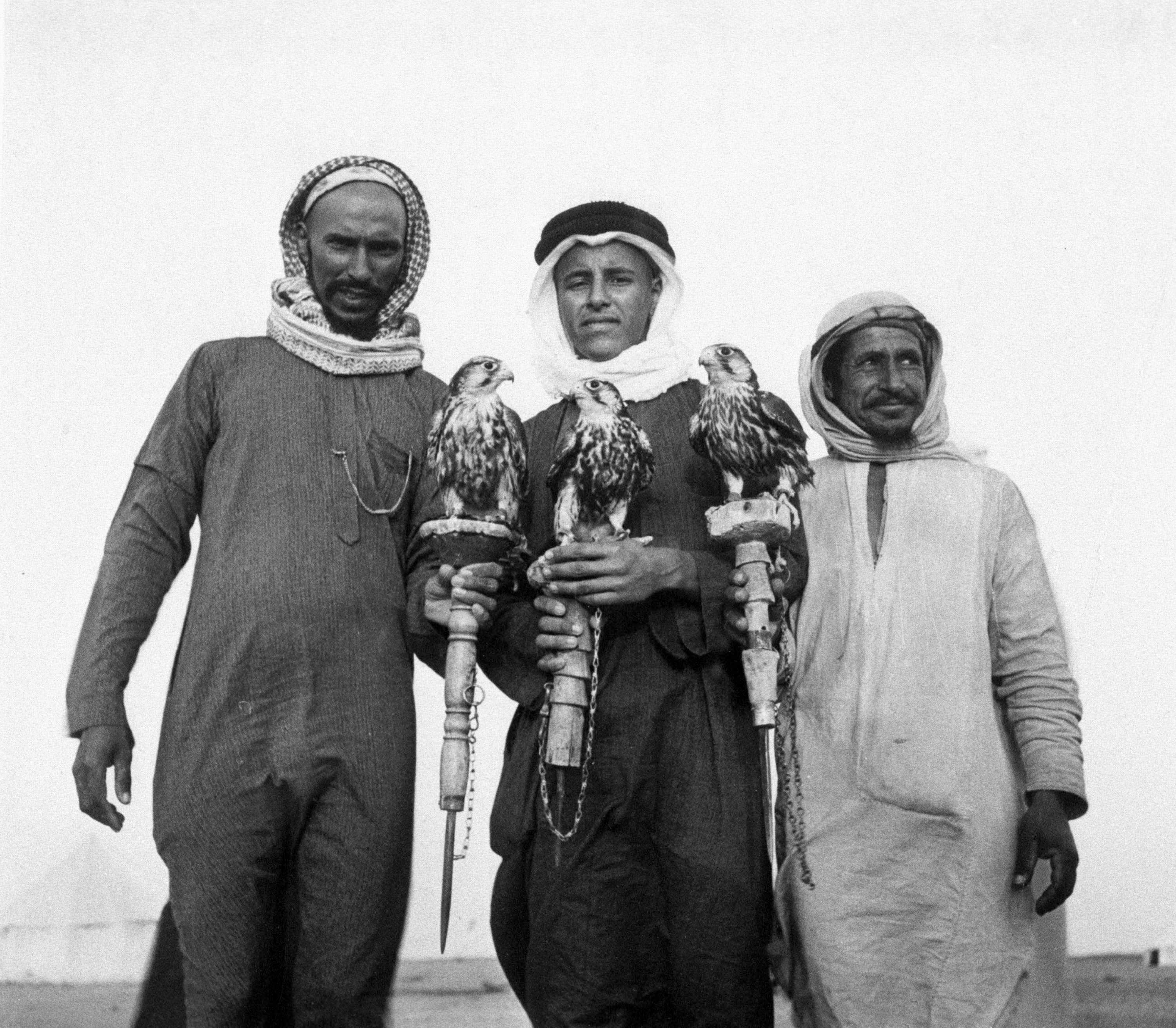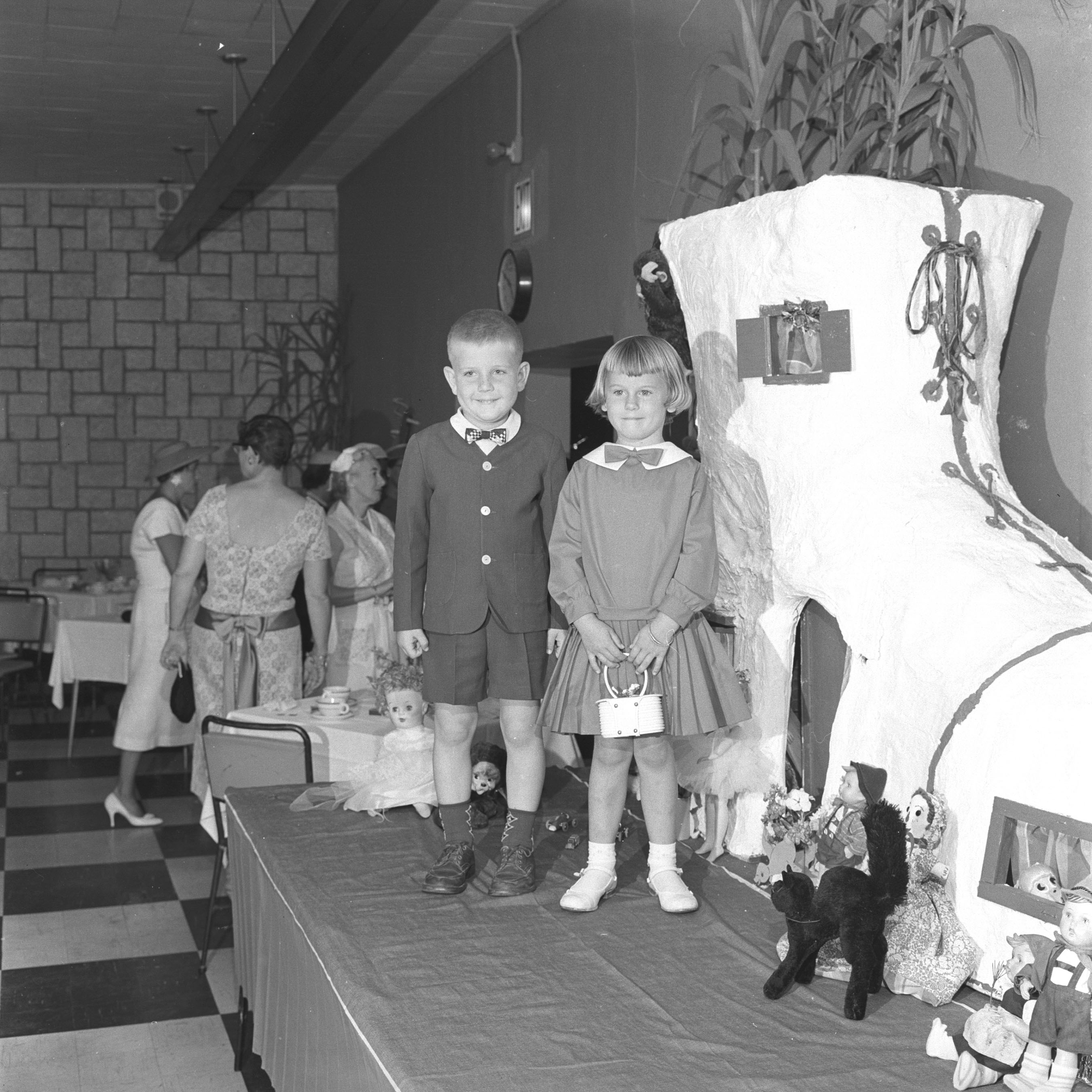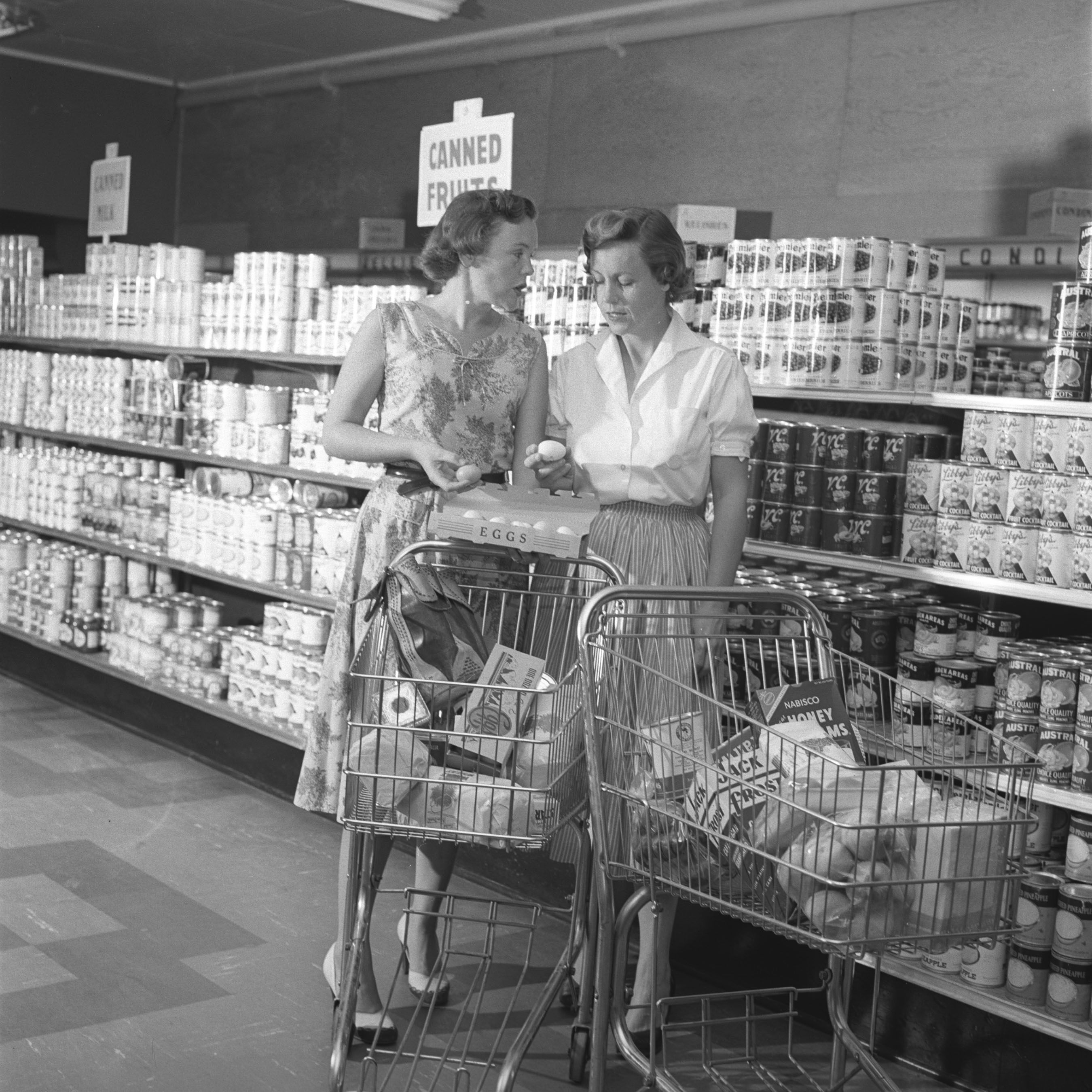Connections & Conversations
Ras Tanura. March, 1958.
Television sets and radio were and remain one of the ways that stories are told and retold, passing on knowledge from one generation and culture to another.
Here, we see that radio and TV sets are among the modern appliances available in shops at Rahimah, Ras Tanura. We see Mrs. Thomas Blake and her son Bobby shopping. Rahimah, Ras Tanura. Courtesy of Aramco Archives.
There is nothing like getting to know other cultures over a hot beverage like coffee. The Arabic version of coffee was inscribed on UNESCO’sintangible cultural heritage list as “an important aspect of hospitality in Arab societies and is considered a ceremonial act of generosity”.
Often, people sit inside a ‘majlis’ — meaning “a place to sit” — while drinking this wonderful aromatic drink. The majlis, which plays an important role in the transfer of oral history and heritage, together with coffee, was also inscribed in 2015 on UNESCO’s list, and both have not only survived the test of time, but have evolved over the years into one of the most cherished and important drinks and rooms in most households around the Gulf and greater Arab region.
From traditional cuisines and unique dances to the art of molding and weaving cultural stories in different crafts, there are endless ways to celebrate intangible heritage by keeping it alive and relevant.
Here we share our latest Aramco rarities and travel back in time through Aramco’s collection of old photos. These show communities sharing their stories through costumes, respect for traditional customs, re-enactments and performances, falconry, and even just the simple act of sitting together and finding out more about each other.

Aramco Dhahran, 1952.
Checking last minute details before their Air Flight from Dhahran To Amsterdam - drinking coffee at the same time — are Henry Caldwell, Robert Westphal And Raymond Rieg. In Holland, They met their mothers whom they hadn't seen in two years.
Courtesy of Aramco Archives.

1940s.
His Majesty King Abdulaziz’s falcons and their caretakers. Falcons were used by the king to spot Gazelles in the desert.

Dhahran. April 17 1959.
In earlier days it was the custom of Americans to wear Saudi Arabian traditional clothes when visiting other parts of the Kingdom. Assembled in Riyadh were R.G. Follis, present Board Chairman of Socal; Robert Miller, Socal Director; and Fred A. Davies.

Dhahran. May 6, 1959.
Stories of our childhood like the old woman in the shoe live on.
Tomy Owen and Stephanie Fate in round-the-clock brother-and-sister suits show the charm that a bow tie and a Peter Pan collar can give simple attire during the Dhahran Children Model Spring Fashions.

Dhahran. March, 1954.
We read other people’s stories in magazines, and we also get an impression of others through what they wear.
Enjoy this wonderful Aramco treasure.
It captures the Dress "Canteen Kerchief", designed by Mrs. F. R. Rasmussen and worn by Beth Geiger for "Fashion is Where You Find it" staged in Dhahran Theater. Courtesy of Aramco Archives.

Dhahran. September, 1955.
Every home has its own set of dishes that become staples, and some get passed down generations via family recipes.
Mrs. K. E. Duell and Mrs. Edward J. Williamson, members of Aramco's Food Research Bureau, who officially tests new food products through the Dhahran test kitchen, meet in the Dhahran Family issue store, where Dhahran housewives do their marketing.
Courtesy of Aramco Archives.


